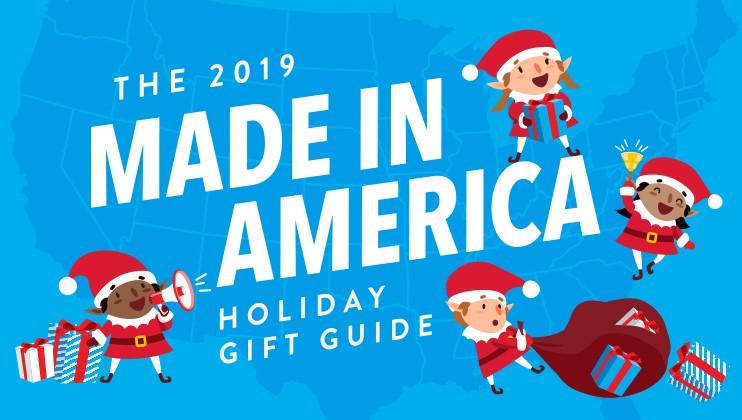I’ve talked about this many times in the past, so much so that it’s become a holiday tradition of its own. But Black Friday is always a good time to bust out this sampling of Made in America gifts from each state, courtesy of the Alliance for American Manufacturing.

Obviously you’re not going to get the big-screen TV or cool electronic gadget from these small companies, but there is an array of stocking stuffers and specialty items that can be useful year-round, most of it hand-crafted by individual entrepreneurs. In fact, this year’s Delaware offerings fall into the jewelry category, featuring what’s called “wire-wrapped jewelry around stones, sea glass and other beach treasures” as well as a bonus company that sells “a large catalog of eye-catching rings.”
It’s a statement I’m going to play with in a moment, but AAM President Scott Paul reminds us that, “This (supply chain) crisis is a reminder about why it’s so important for our national and economic security that the United States is able to make stuff right here at home. Buying your holiday gifts from this guide is a good way to support companies doing the right thing – and show others they can make money manufacturing here at home, too.” They’re even doing a Cyber Monday webinar featuring a few of these artisans, although it’s not really conducive to working stiffs, being that it’s a mid-day webinar.
The parent term Black Friday has become so ubiquitous to retail that it’s spawned several new variations – we have Small Business Saturday, Cyber Monday, and Giving Tuesday now. Except for the latter, which is devoted to charity, each of these terms most likely describes the companies defined in the Holiday Gift Guide – small businesses that do most (if not all) their business online and depend on people’s gift giving for their livelihood. (Let’s face it – aside from the satisfaction quotient, do you really need jewelry? I own one piece, and that’s my plain wedding ring.)
Since the AAM began soliciting ideas for their Holiday Gift Guide back in October, though, there are some places for whom the concept wouldn’t work as personalized gifts require longer lead times. As one example, Brent Zockoll is a good friend of mine – locals to the Salisbury area are most likely familiar with his company, Zockoll Pottery. And while he has a collection of available items, a lot of his work is contract work, made in batches, so he’s not the best fit for the Guide. But he is a small businessman, making stuff in the rural environs of Parsonsburg, Maryland – which, last time I checked, was part of America – whose livelihood has become slinging clay, not keeping a bricks-and-mortar shop open. (Once in awhile though, and especially around the holidays, his studio becomes a retail outlet – check his social media for details.)
I look at it this way: the more things we produce and buy in America, the less we have to depend on nations who maybe can’t stand our freedom because their religion prohibits it or countries who have nuclear missiles pointed our way. Yes, we live in a world dependent on trade, but I’d rather be the one in the most powerful position so we can maintain our freedom. That’s the biggest gift of all.


